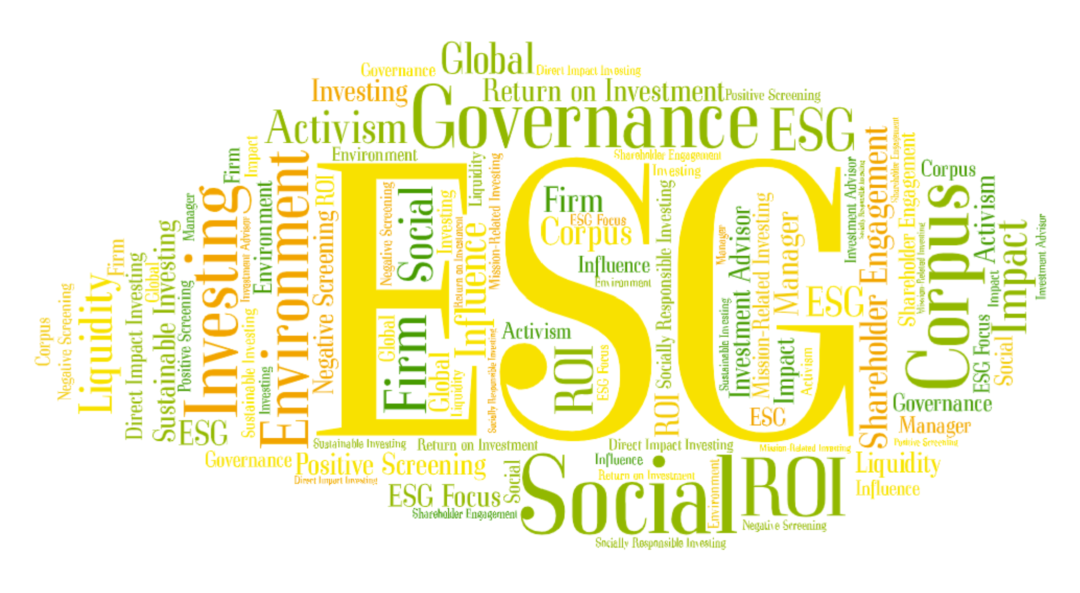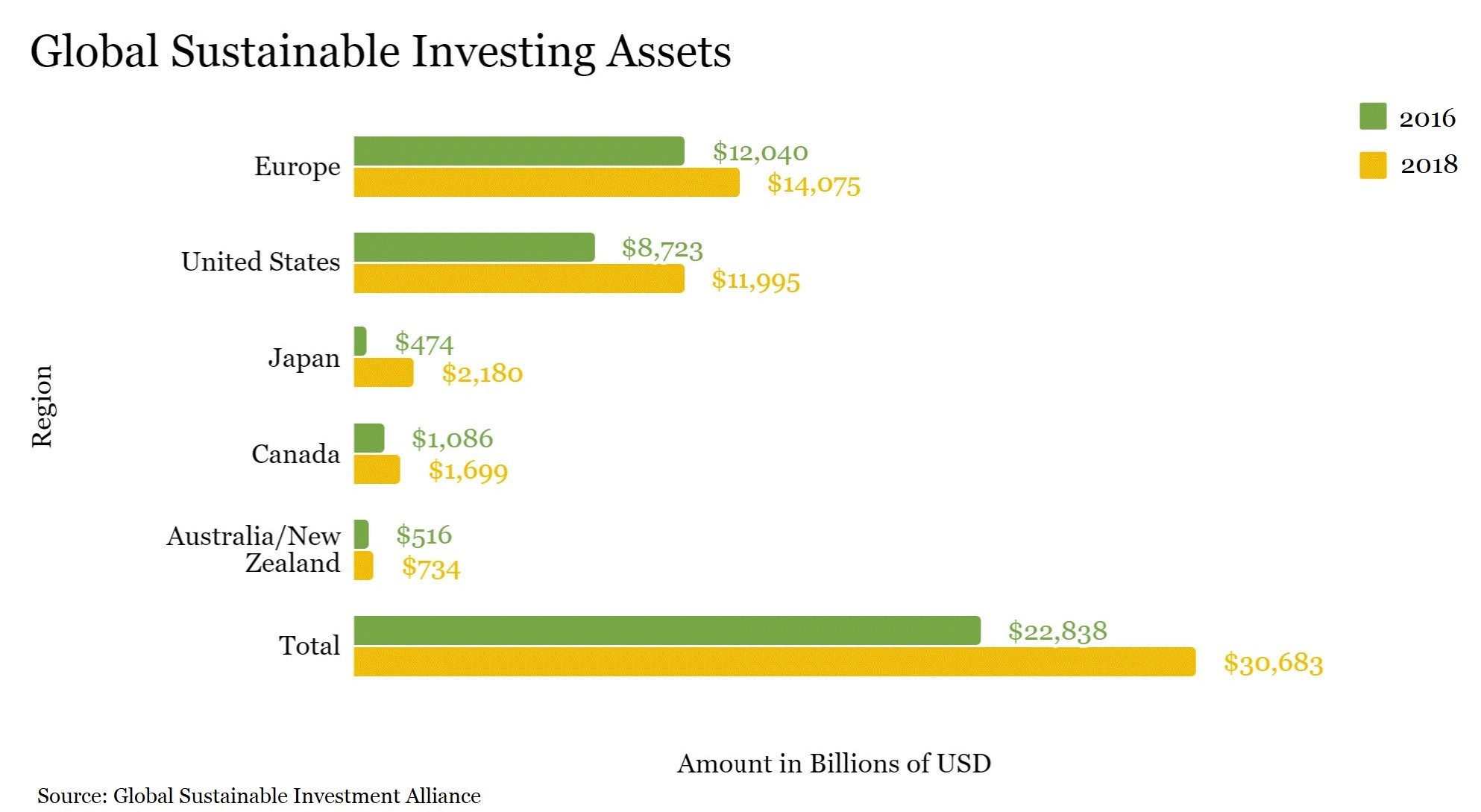ESG Investing: Where To Start
Categorized as: About us, Education, Grantmaking strategy, Leadership, Poverty Alleviation, Social-impact investments, Stories, U.S. on July 25, 2020.

Editor’s Note: Welcome to Part Two of our ESG series. We’re so glad that this has sparked an interest in our readers and are eager to help you all with the next steps in moving your corpus to have impact. Read on about how to begin this process within your foundation and some options that are available to you as you get started.
 By Bri Skees, Program Officer and VP of Research and Data Management
By Bri Skees, Program Officer and VP of Research and Data Management
As mentioned in Part One, the field of ESG is not entirely easy to navigate and understand. But once I was able to grasp all the ESG jargon and learn as much as possible about the importance of this type of investing, it was time to decide how we could move our corpus into ESG investment strategies. Here is what I learned!
Talk to Your Advisor
Your first step can very easily be just talking to your financial advisor or manager. There is a chance the firm you are currently using has these strategies available.
The comparable returns and the push toward corporate responsibility are growing in appeal to investors. More and more firms are starting to incorporate ESG research and screens in their investment options, so it could be right under your nose and you just have to ask.
Neuberger Berman and AllianceBernstein are two examples of firms that have developed debt and equity strategies that integrate ESG factors.
No Luck?
If your firm doesn’t have anything like this available but it is something you really want to be a part of, then your workload just got a bit heavier. It is time to start the hunt for some new investment management opportunities, which involves moving some or all of your corpus to another firm. So now, you have to decide what kind of ESG strategy you want to be a part of–simple positive screening, full impact, or somewhere in between?
From what I have discovered, you have two options: traditional investment firms with an ESG focus or impact investing firms.
Traditional-ish Firms with an ESG Focus
If you wanted to have all of your corpus under one roof while also putting more or all of it into impact, this would be the more sensible option. These are investment firms who have a clear and loud dedication to ESG opportunities and impact investing. They have teams who specialize in these areas and have ESG-centered options in 100% of their investments, not just one or two ESG funds. Then, if you want to go deeper into direct impact investing, they have options for that as well, which is very unique.
The returns in firms like these are comparable to traditional firms. The fees vary depending on the firm, as well as the investment strategies within those firms. From my search, I have found that these firms are significantly smaller in terms of assets under management (AUM) than the big-name firms like AllianceBernstein, so they might not have as many portfolios to choose from, but still have plenty to properly diversify your corpus.
Some great examples of this kind of firm are Trillium Asset Management and NorthStar Assets. They have both been working in the ESG space for over three decades and have a lot of capabilities in helping new-to-ESG investors navigate their investments.
Impact Investing Firms
These firms deal directly with impact investments. They can vary in size and have different methods of investing. With some larger impact investing firms, you can find specific social enterprises or nonprofits that you love and you can specify exactly how much money you want to invest in each impact investment. The investment then works similarly to a mutual fund, where money is pooled from many investors to create one large fund for that organization, and then the returns are divided up based on how much each investor put in. With smaller impact investing firms, there is one set portfolio that you can invest in. With some impact investing firms, you can have liquidity; with others liquidity is an issue. It all depends on the size and management of the firm. However, all investments will be impact-focused, not just ESG-oriented. Like other firms, fees vary. The ROI can also vary heavily depending on the firm, but they can be competitive with traditional firms.
The main problem with this type of firm is that they traditionally are not equipped to manage your entire corpus. To put all of your corpus into their funds would be quite risky and wouldn’t allow you the diversification options you would need.
Examples include Calvert Impact Capital and Nia Global Solutions. Both are impact-focused and can provide competitive returns, but vary in their investment strategies.
Join Us in Making the Shift
So there you go. I truly hope the information provided is both compelling and helpful in guiding other foundations toward ESG investing. If we really want to make a difference in this world, no matter what difference that is, we have this expanded opportunity to start using all of our corpus to make those changes. Grants are amazing, but there is no reason why we can’t be walking our talk with all of the assets available to us. If you are interested in going down this path, I am here to answer questions, so please don’t hesitate to reach out. And, stay tuned for part three on finding the best investment firm for your ESG goals!
Photos courtesy of various photographers on Unsplash.
SHARE this story with your networks; see menu at top and bottom of page.
SUBSCRIBE! Like what you see? Click here to subscribe to Seeds of Hope!



